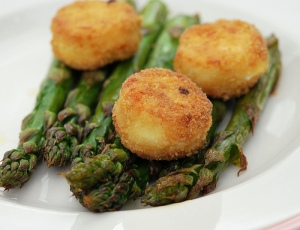Blue cheese can be used to completely change up your tired old stand-by recipes, from stuffed chicken and burgers to pancakes and steak. This simple recipe is a great way to try blue cheese for the first time or get the whole family to enjoy something new mixed into a classic recipe.
Mac and Bleu Cheese with Crumbled Bacon
Macaroni and cheese recipes are usually made with Cheddar or American cheese. Unfortunately, this can get old quickly and it’s really suited to a child’s taste, not an adult’s palate. This is one of those cheese recipes that allows you to introduce people — including your children — to something new by pairing it with a familiar taste: Cheddar. The taste of the Gruyere and bleu cheese goes so well with the salty bacon and this recipe is always a hit.
Ingredients
4 ounces of bacon, thick-sliced style
Vegetable oil for cooking pasta
Kosher salt, to taste
2 cups of elbow macaroni, uncooked
1 and a half cups milk
2 tablespoons unsalted butter
2 tablespoons all-purpose flour
4 ounces grated Gruyere cheese
3 ounces grated extra sharp Cheddar cheese
2 ounces Castello crumbled Danish Blue
Dash of nutmeg, ground pepper and salt
2 slices of white sandwich bread with the crusts removed, or bread crumbs
2 tablespoons freshly chopped basil
Directions
1. Preheat the oven to 400 degrees. Prepare a baking dish with butter or cooking spray.
2. Bake bacon in the oven until crispy, about 20 minutes. Remove and transfer to a plate lined with paper towels. When cool, crumble and set aside.
3. Cook pasta according to package directions with a bit of vegetable oil to prevent sticking.
4. Heat milk in a large saucepan over medium heat, watching carefully so it doesn’t boil. Meanwhile, melt the butter in a separate pot and add in the flour, whisking until incorporated. Cook the butter and flour over low for about two minutes while whisking.
5. Add the warm milk to the flour mixture and continue whisking until smooth and thickened. Remove the sauce from the heat and add all three cheeses, the nutmeg, salt and pepper to taste. Add the cooked pasta and crumbled bacon and stir. Pour into a prepared baking dish.
6. Pulse the bread in a food processor until crumbled; add basil and pulse once more to incorporate. Sprinkle crumbs over the pasta and bake around 40 minutes or until browned.
More excellent recipes for blue cheese are available at Castello USA.
 Havarti is a semi-soft table cheese with Danish origins. Made from cow’s milk, it’s incredibly versatile because it can be sliced for sandwiches, cooked on the grill, or melted in a sauce.
Havarti is a semi-soft table cheese with Danish origins. Made from cow’s milk, it’s incredibly versatile because it can be sliced for sandwiches, cooked on the grill, or melted in a sauce.





